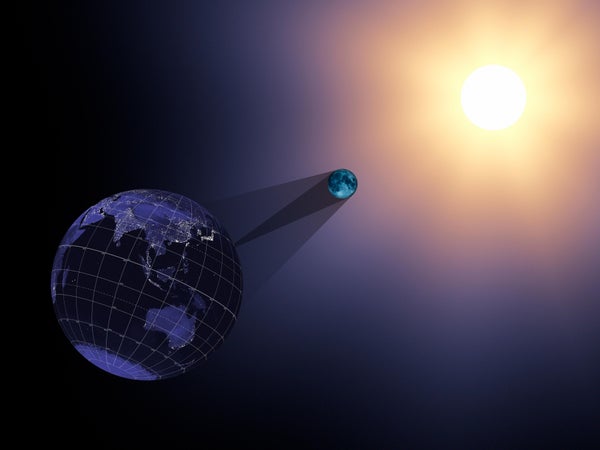Total Solar Eclipses Are Cosmic Coincidences That Won’t Last Forever
Earthlings are very lucky to see the spectacle of a total solar eclipse
Science History Images/Alamy Stock Photo
This article is part of a special report on the total solar eclipse that will be visible from parts of the U.S., Mexico and Canada on April 8, 2024.
At first blush, the circumstances required for a total solar eclipse sound technical but mundane: the sun, moon and Earth line up, in that order. Sure, it happens just once every 18 months or so, and only a thin strip of Earth experiences the marvel of totality during each eclipse, but how hard can it be for one to occur?
Astronomically hard, it turns out: the conditions required for Earthlings to experience a total solar eclipse like the one about to occur across a swath of North America have been developing for billions of years, and the phenomenon relies on the unique relationship between Earth and our moon.
On supporting science journalism
If you’re enjoying this article, consider supporting our award-winning journalism by subscribing. By purchasing a subscription you are helping to ensure the future of impactful stories about the discoveries and ideas shaping our world today.
“People always associate eclipses with the sun, but of course you’re really looking at the moon,” says Parvathy Prem, a planetary scientist at Johns Hopkins University’s Applied Physics Laboratory. “In some sense, you’re touching the shadow of the moon,” she says. The spectacle is “a reminder that the Earth and the moon are connected.”
Total solar eclipses get their drama from a tidy set of coincidences. Most prominently, the sun, which is about 400 times larger than the moon, is located about 400 times farther away from Earth. The result is an illusion in which both sun and moon appear to be about the same size in our sky, allowing the moon to block out the sun’s visible disk while revealing the fiery white corona of its…
Read the full article here







